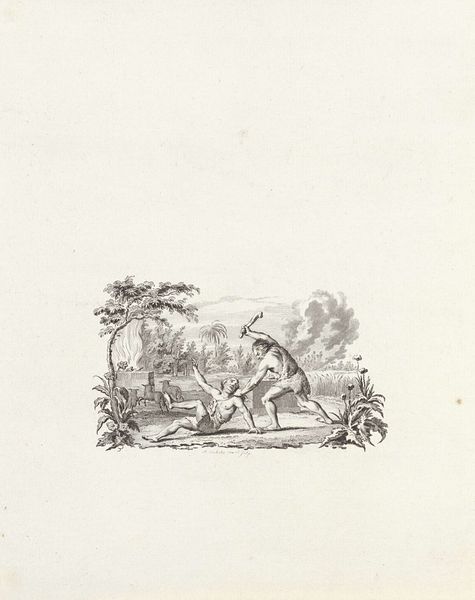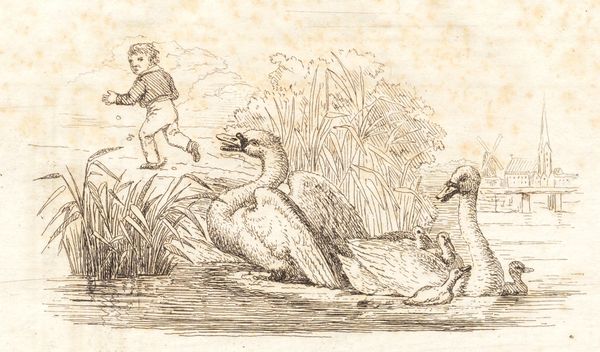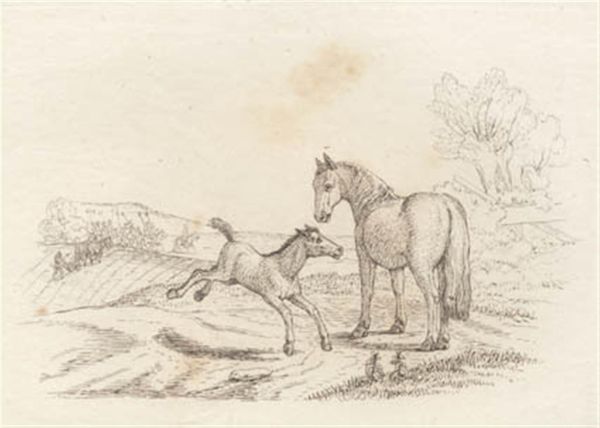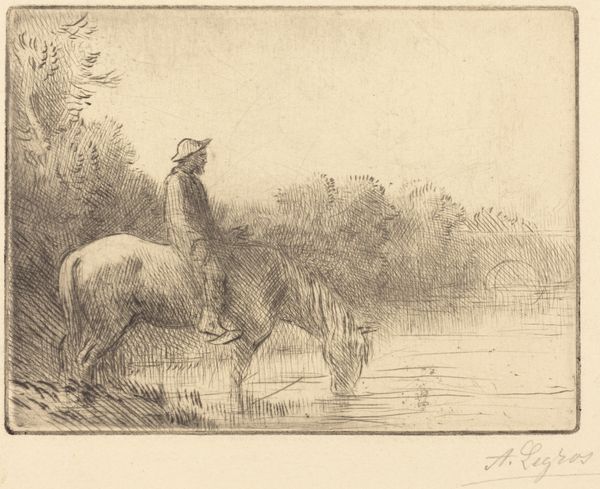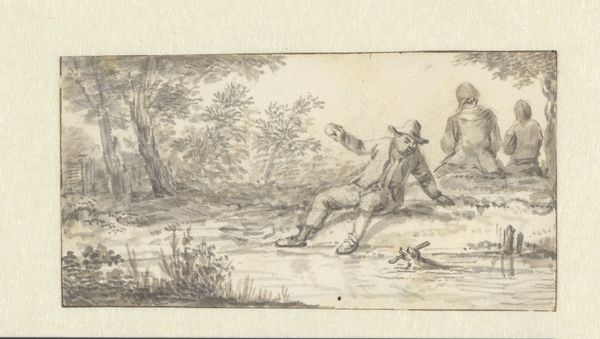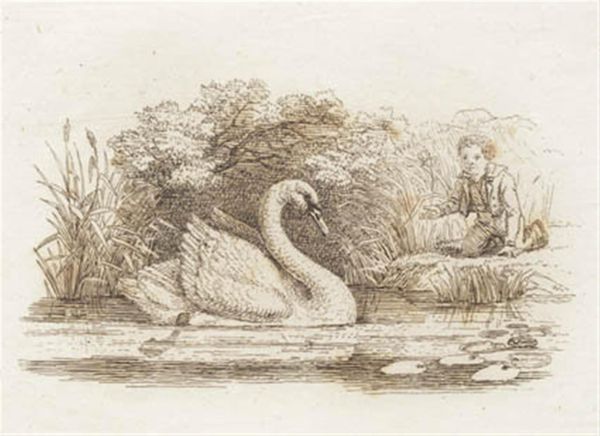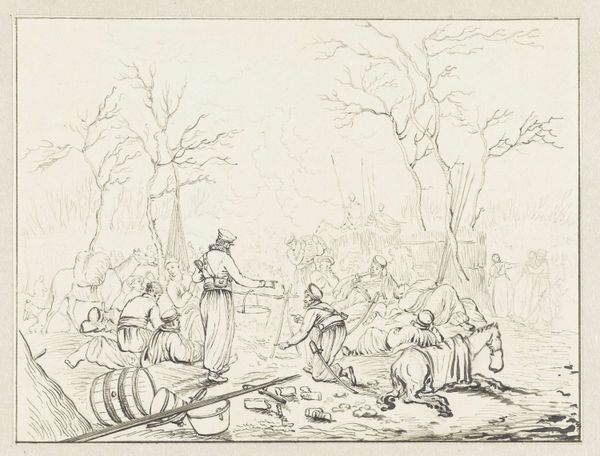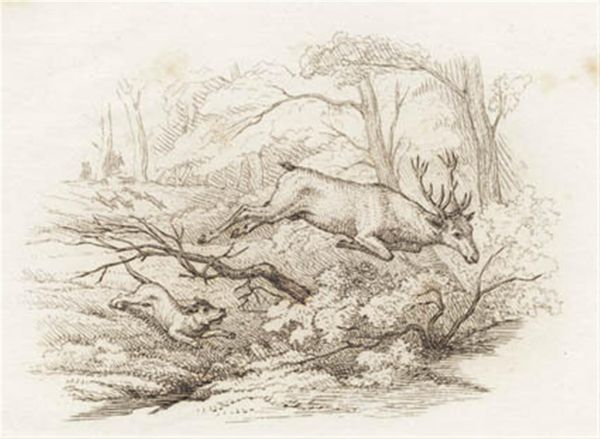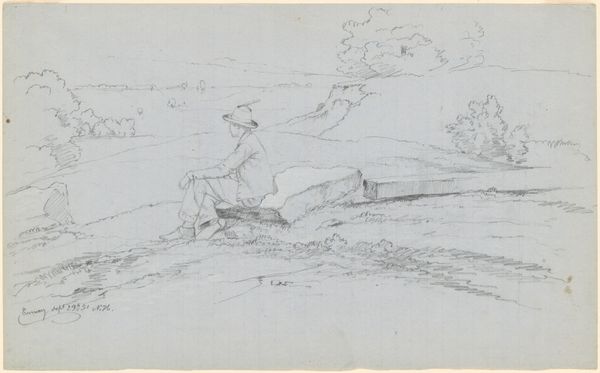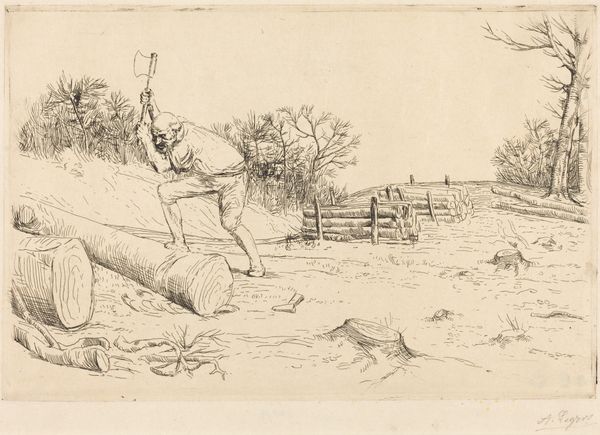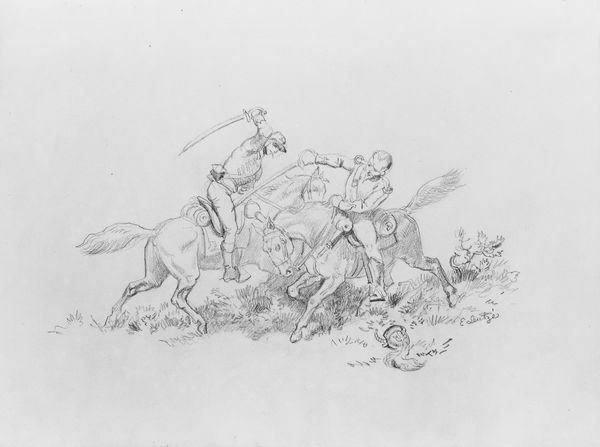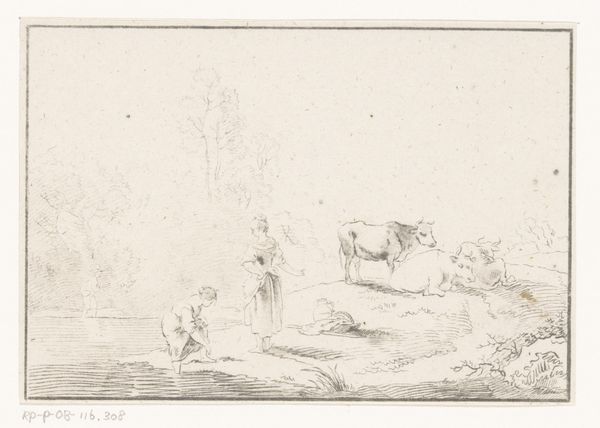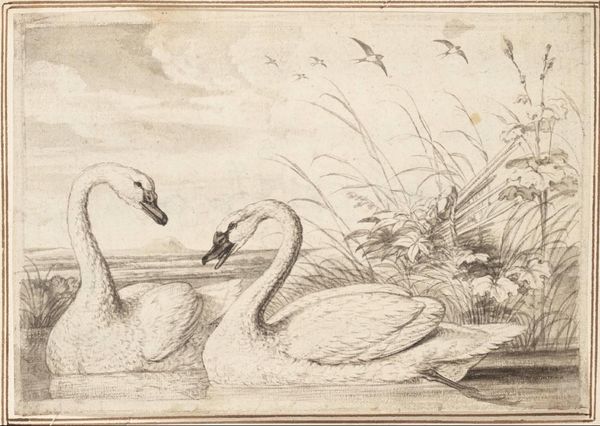
Illustration til "Halvhundrede Fabler for Børn" af Hey 1834
0:00
0:00
print, pencil, engraving
# print
#
pencil sketch
#
landscape
#
romanticism
#
pencil
#
genre-painting
#
engraving
Dimensions: 145 mm (height) x 260 mm (width) (bladmaal)
Curator: This delicate print is an illustration by Martinus Rørbye, dating back to 1834. It's an engraving created as an illustration for "Fifty Fables for Children" by Hey. Editor: My first impression is one of a serene yet unsettling childhood scene. The delicate lines almost give it a dreamlike quality, but the implied threat towards the swans breaks the calm. I'm intrigued by the contrast between idyllic nature and potential malice. Curator: It's fascinating to consider the role of such images in shaping childhood perceptions in the 19th century. Rørbye was deeply engaged with Romanticism, and that emphasis on emotionality comes through. We can observe the burgeoning middle class through prints like this as it depicts an idealized image of childhood—one that wasn’t accessible for many people during the time due to industrial development and labor needs. Editor: Absolutely. From a materialist perspective, consider the copper engraving process. It's labor-intensive, requiring skill and precision. Prints such as these were relatively affordable and allowed for wider dissemination of stories and images, making visual narratives accessible to an expanding audience. How would it have shaped the readers, to know that there was a slow, physical labor put into this visual? Curator: It is indeed crucial to reflect on how technological advances like the printing press and related engraving techniques in the 19th century contributed to creating a more informed, engaged—but also manipulated—public sphere. Publishers carefully controlled which texts and images were available and easily accessible to the masses, which, in turn, has influenced socio-political discourses on childhood development as a crucial, early phase of social formatting. Editor: And the materials themselves would influence the artist's style, wouldn't they? The engraver is dependent on lines in a specific, material way. Rørbye likely made a pencil sketch which then influenced the work of the engraver to make decisions, too. Curator: A powerful reminder of the interplay between art, childhood, and social context, captured in this small but thought-provoking piece. Editor: A narrative of craft, access, and potentially uneasy childhood that continues to resonate.
Comments
No comments
Be the first to comment and join the conversation on the ultimate creative platform.
